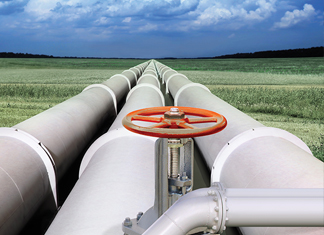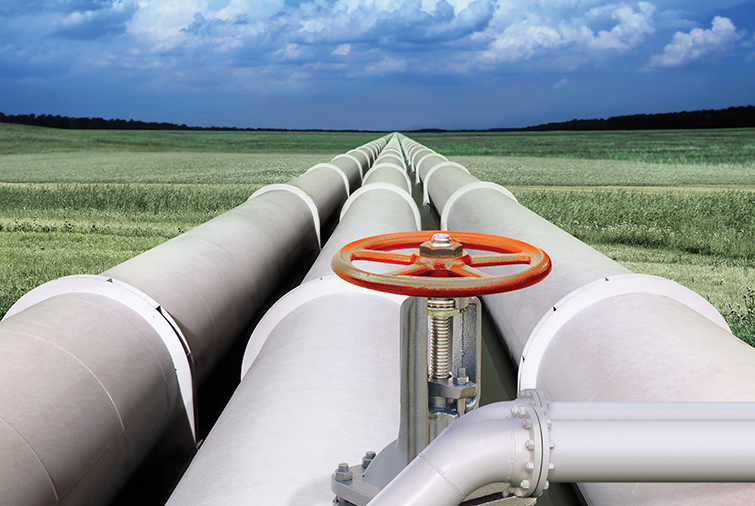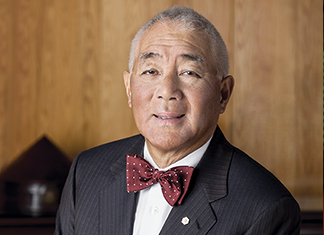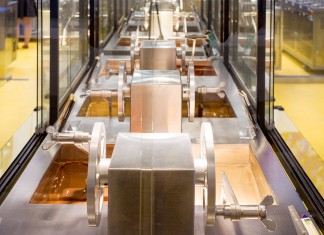Selling Oil in a Buyers’ Market: Canada’s Pipeline Dilemma
- Caifu Magazine | by Alan Forsythe
- EN

The original Trans Mountain pipeline was approved by act of parliament in 1952. Construction of the nearly 1,200 kilometer pipeline linking Alberta oilfields to Vancouver’s Burrard inlet and the Pacific coast began.
Completed in 1953, and reaching full capacity in 1957, the pipeline has been safely pumping 250,000 barrels of oil a day over its entire length ever since.

Trans Mountain Pipeline Co. Ltd. built the original line, which was acquired by a subsidiary of U.S. company Kinder Morgan in 2005. Ten years ago, Kinder Morgan expanded capacity of the pipeline to 300,000 barrels per day, but with oil [at the time] in the $100 USD a barrel range, doubling or even tripling that capacity soon became the expressed goal of Kinder Morgan Canada’s pipeline operations.
Canadian Prime Minister Justin Trudeau approved the long, gestating $7.4 billion CAD project in the fall 2016. In doing so, he stressed, at the time, that finding alternatives to the U.S. markets for Canadian oil was critical. “The fact is oil sands production is going to increase in the coming years…,” he added. “We are at capacity in terms of existing pipelines that means more oil is going to be transported by rail if we don’t build more pipelines.“
According to the Canadian Association of Petroleum Producers (CAPP), transporting oil by rail in Canada peaked at approximately 175,000 barrels per day in 2014, but still makes up about 125,000 barrels of transport capacity of Canada’s 3.5 million barrels per day oil production. Rail transport of oil, besides inherent safety issues, cuts further into already deeply discounted Canadian crude against West Texas Intermediate (WTI).
Many in the Canadian oil industry call getting pipelines to tidewater critical. Some energy strategists referred to Trans Mountain “as a game changer,” that would allow direct access to Chinese and Indian markets, which already have refineries capable of processing Alberta heavy crude.
Despite the approval from the federal government, the pipeline’s future ran into more uncertainty following the outcome of British Columbia’s provincial election in May 2017. The New Democratic Party (NDP) and Green Party formed a coalition and have maintained a minority government, albeit one whose stated purpose is obstructing the expansion of the Trans Mountain pipeline at all costs.
Kinder Morgan has, in the meantime, completed financing for the expansion of Trans Mountain. They planned to begin construction in 2017, with completion set for mid-2019.
In a release, Ian Anderson, president of Kinder Morgan Canada, commented in a release about the capitalization of the project:
“This is an exciting day for our customers, for communities, and for the many individuals who are relying on this project to deliver jobs and economic benefits.” He added: “This securing of financing for the project demonstrates the need for and interest in the opportunity for Canada to have better access to world markets.”
With financing in place and a secure capital investment, Anderson noted the Trans Mountain project at this stage automatically triggers previously negotiated construction contracts. So while the Green Party and the NDP may not agree with the project on ideological grounds, to put a halt to it will require an explanation of the thousands of jobs that will be lost. Some figures put that at roughly 15,000 jobs per year during pipeline construction.
“Making this pipe means preserving and creating highly skilled, well-paying, middle class Canadian jobs,” said Stephen Hunt of United Steelworkers, whose union (Local 5890) will be manufacturing the material for the project.
While it was the governing Liberal Party of Canada (since 2015) who approved the pipeline, they did also, under leader Trudeau, effectively kill the Northern Gateway pipeline via a tanker ban. This $7.9 billion (CAD) project was brought forward by Enbridge Inc. shortly ahead of the Trans Mountain proposal, and had also expected to be completed by 2019. It would have taken a shorter route from Alberta oilfields across northern British Columbia to the port of Kitimat (or possibly Prince George, which is one week’s sailing time closer to Shanghai than Los Angeles/Long Beach, California).
Approved by the former Conservative Party government in 2014, it was then made unfeasible, as noted, by a tanker ban on British Columbia’s north coast. The other alternative route for pipeline to tidewater in Canada is TransCanada Corp’s Energy East project.
Also based on a pipeline built in the early 1950s, it would require repurposing the original TransCanada pipeline from natural gas to oil and an additional 1,500 kilometers to its existing 3,000 kilometer length. Energy East would link western Canadian oil to Canada’s east coast, and also to refineries in the central Canadian provinces of Ontario and Quebec. This would further reduce Canadian imports of U.S. oil (about 700,000 barrels per day against up to 3.5 million daily in exports).
While it would seem that politically Energy East would be an easy project to approve based on nationalistic sentiment, it is in fact at least a decade behind Trans Mountain in the regulatory process. At the glacial speed at which that process moves in Canada, Energy East could be decades away from realization.
This creates more pressure on Trans Mountain as the only means (other than rail) by which Alberta heavy crude could reach Asian markets. The CAPP’s 2017 market outlook forecasts Canadian oil production rising by 1.5 barrels per day for a total of 5.1 million barrels per day by 2030. And those are conservative estimates. Some analysts put total Canadian output at 5.2 million barrels per day by 2021. But even the more conservative estimate would exceed current pipeline capacity by 1.1 million barrels. It’s unlikely rail capacity can or will grow much beyond 300,000 barrels per day.
Kinder Morgan, with partner Imperial Oil Ltd., owns 210,000 barrel per day capacity in tanker stock, which in the short term allows them to alleviate some of the bottleneck. But it is likely the desire of Kinder Morgan, Imperial Oil and other producers to add that capacity to the 900,000 barrels of oil per day Trans Mountain could bring to the Pacific Coast and create a million plus barrel per day Asian market for Canadian crude.
Ironically, just as domestic politics in British Columbia may delay Trans Mountain and the creation of an Asian market for Canadian oil; international politics in the trade arena are creating the right conditions for Canada to exploit other markets other than the United States.
With the proposed renegotiation of the North American Free Trade Agreement, Canada could be free to move away from its energy export quotas for the U.S., which was originally negotiated to insure Canada had a market for at least two thirds of its oil and gas output.
Timing is everything. The future of Canada’s oil industry for the next 10-20 years may hinge on decisions made within the next year.
Although understandably reluctant to comment on the current political climate in British Columbia, Kinder Morgan Canada has made it clear they do intend to move forward with the Trans Mountain project.















